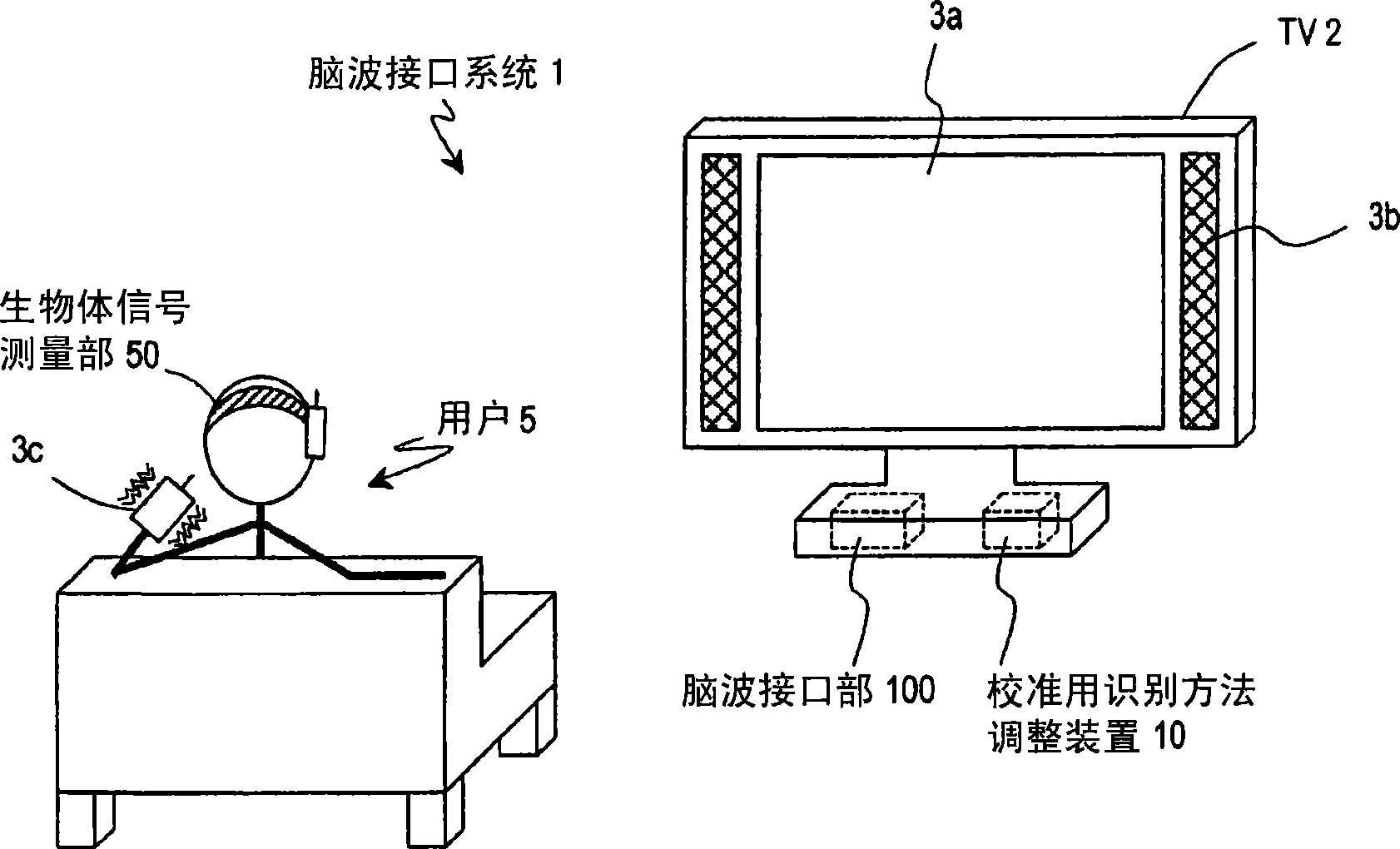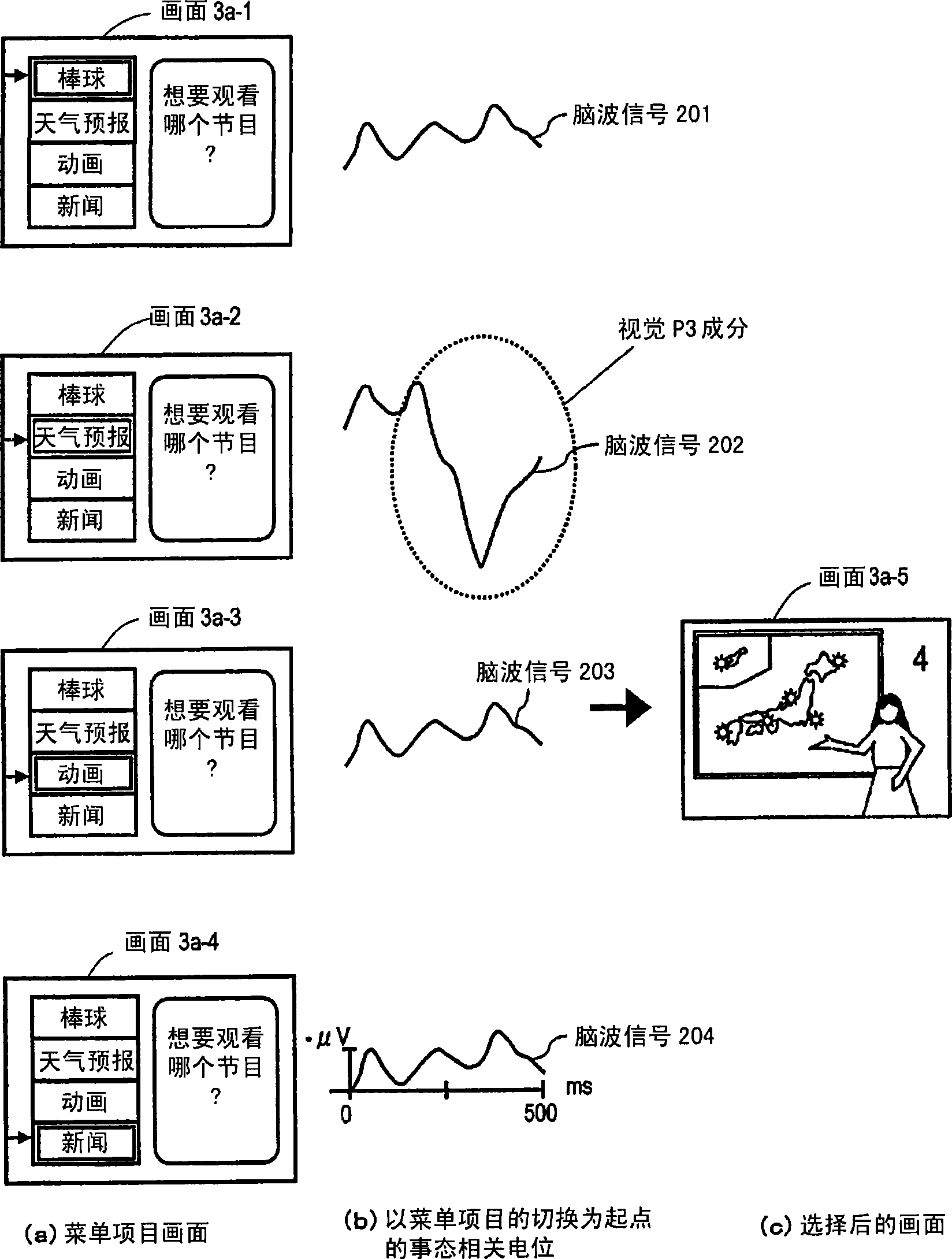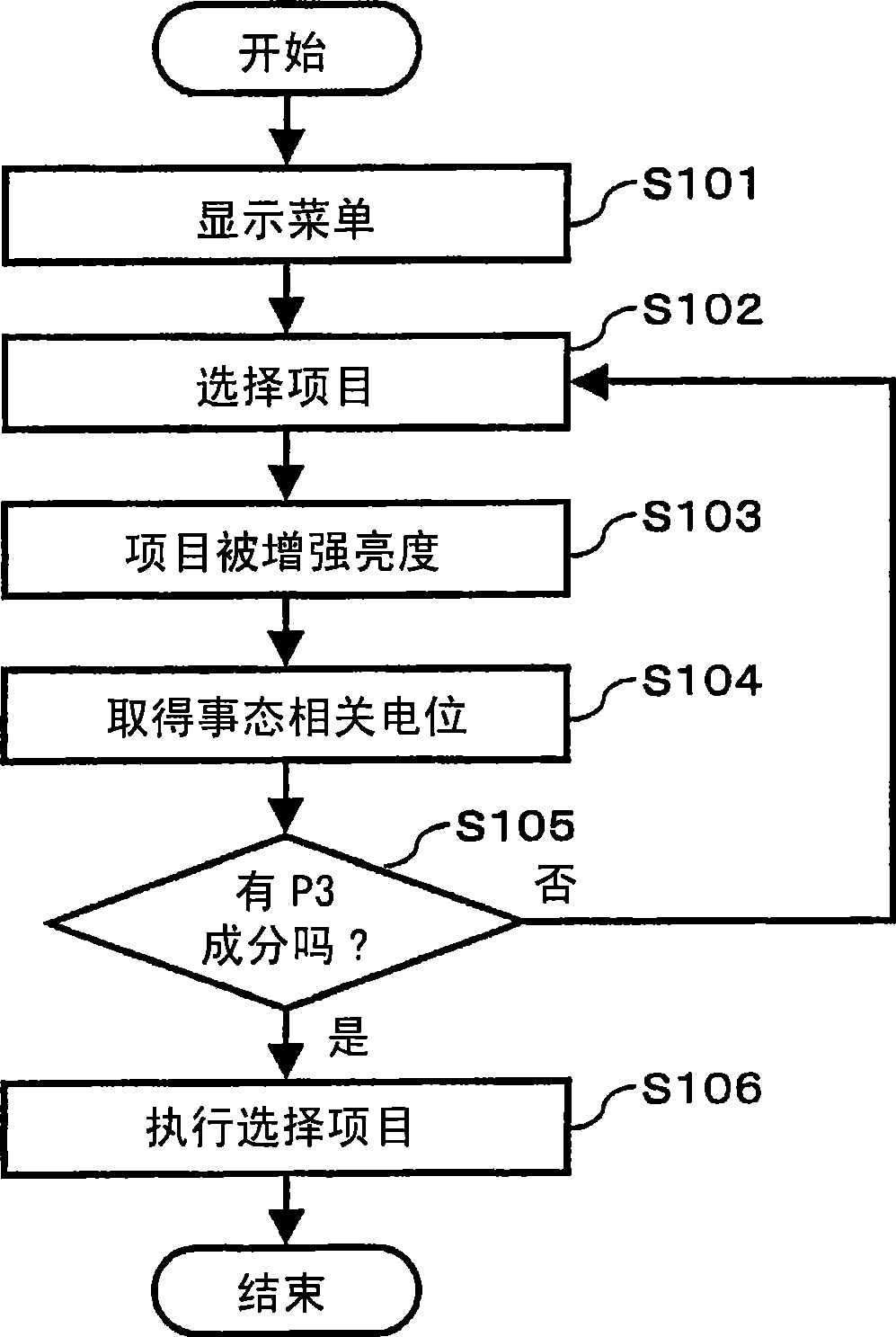Brain wave identification method adjusting device and method
An identification method and a technology for adjusting a device, applied in the field of interface systems, can solve the problems of inability to ensure that the user pays attention to calibration stimuli, inability to measure user states such as arousal, inability to change identification standards, etc., so as to eliminate missed calibration stimuli, Improved operability and high recognition rate
- Summary
- Abstract
- Description
- Claims
- Application Information
AI Technical Summary
Problems solved by technology
Method used
Image
Examples
Embodiment approach 1
[0072] Figure 4The configuration of the functional modules of the electroencephalogram interface system 1 according to the present embodiment is shown. The electroencephalogram interface system 1 includes an output unit 3 , a recognition method adjustment device 10 , a biological signal measurement unit 50 , and an electroencephalogram interface (IF) unit 100 . Figure 4 Detailed functional blocks of the adjustment device 10 are also shown. For ease of illustration, the modules of user 5 are also shown.
[0073] The output unit 3 has a screen 3a and a speaker 3b.
[0074] In the present embodiment, auditory stimuli are presented from the speaker 3b while the menu item is displayed on the screen 3a as the stimuli for calibration, and the vision in the electroencephalogram interface is adjusted using the P3 component of the event-related potential corresponding to the auditory stimuli for calibration. Methods of identifying P3 components. As a result, it is possible to perf...
Embodiment approach 2
[0127] In the electroencephalogram interface system 1 according to the first embodiment, the stimulation presentation unit 11 presents auditory stimulation for calibration simultaneously with the presentation of the menu item by the electroencephalogram interface unit 100 . As a result, it is possible to adjust the identification method according to the user state or the electrode attachment state before the electroencephalogram interface is used.
[0128] However, as described above, since the event-related potential S / N is low, when the stimulus for calibration is presented and large noise such as electro-oculogram is mixed, there is a possibility that calibration cannot be performed accurately.
[0129] In the electroencephalogram interface system according to the present embodiment, the auditory stimulation for calibration is presented at random timing or predetermined timing, not limited to before the electroencephalogram interface is used. Then, the user's state or the e...
Embodiment approach 3
[0150] In the interface systems according to Embodiments 1 and 2, the case where calibration is performed using auditory stimuli such that the user does not miss calibration stimuli has been described.
[0151] However, the brainwave interface system in addition to figure 1 In addition to the stand-alone device such as the shown TV2, a portable device can be constructed as an operation object. When you go out with a portable device and want to use the brain wave interface system to operate, for example, even if an auditory stimulus is prompted in a crowd or in a train, it may be missed. In addition, there are cases in which auditory stimuli should not be presented for polite reasons. As a result, it may not be possible to perform proper calibration using auditory stimuli.
[0152] The electroencephalogram interface system 150 of the present embodiment does not present auditory stimuli, but presents somatosensory sensations as calibration stimuli. If it is a somatosensory st...
PUM
 Login to View More
Login to View More Abstract
Description
Claims
Application Information
 Login to View More
Login to View More - R&D
- Intellectual Property
- Life Sciences
- Materials
- Tech Scout
- Unparalleled Data Quality
- Higher Quality Content
- 60% Fewer Hallucinations
Browse by: Latest US Patents, China's latest patents, Technical Efficacy Thesaurus, Application Domain, Technology Topic, Popular Technical Reports.
© 2025 PatSnap. All rights reserved.Legal|Privacy policy|Modern Slavery Act Transparency Statement|Sitemap|About US| Contact US: help@patsnap.com



